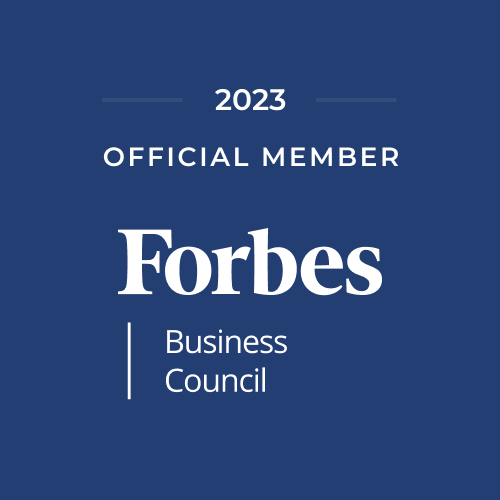Power Reads: 5 Interesting Articles That Will Help You This Week
/Each week, I select a few articles that rise above the fray and hopefully help you on your journey in leadership and the CRE world. They pull from one of four "corners": corporate real estate, technology, management science and anything positive. Each day we can become a better version of ourselves.
1. Bosses giving up the return-to-office fight have found another way to win: Tracking their remote workers’ every move
Many workers may have the right to work from the couch, but that doesn’t mean their boss is more chill than usual. If anything, that boss may be watching them more closely.
“No longer able to crane their necks around the cubicle and check in on workers, more employers have turned to monitoring digital productivity instead. Eight out of the 10 largest private employers in the U.S. are tracking productivity metrics for their employees, according to an examination from The New York Times. Some of this software measures active time, watches for keyboard pauses, and even silently counts keystrokes. ”
J.P. Morgan, Barclays Bank, and UnitedHealth Group all track employees, The Times reported, seeing everything from how long it takes to write an email to keyboard activity. There are repercussions if workers aren’t meeting expectations: a prodding note, a skipped bonus, or a work-from-home day taken away, to name a few.
2. Trying to attract and retain Gen Z? Experts say one trait is key.
Generation Z's entrance to workforce has been a unique one. For many members of Gen Z — those born between the mid-to-late 1990s and the early 2010s — the pandemic upended their school schedules, their debut in the workforce or both.
“Additionally, they’ve entered the workforce at a time when many companies are rethinking their workplace strategies and competing in a fierce battle for talent.”
Against that backdrop, it's no surprise many managers and executives have been vexed by the youngest generation of the workforce — a cohort experts say is, on the whole, more vocal and socially conscious than their predecessors.
3. The Hidden Power of Workplace Rituals
Leaders are under enormous pressure to address societal issues, maintain an active DEI strategy, and keep employees connected to each other and to the company’s mission. And since employees rightly expect to be able to bring their feelings — big and small — to work, supporting employees during cultural trauma and strife is every leader’s job. It’s not always obvious how to address these issues at work, especially when leaders aren’t necessarily trained or experienced in navigating such sensitive, emotional topics. One important way to provide the support employees expect is through rituals.
“I’ve studied the impact of workplace rituals on individuals, teams, and the bottom line for many years for my book, Rituals Roadmap. This research has helped me define rituals using two important benchmarks. First, rituals go beyond their practical purpose, moving participants beyond transaction and into meaning. For instance, lighting a candle when the lights go out isn’t a ritual, but turning off the lights and lighting a candle at sundown is. Second, rituals are sorely missed when they’re taken away.”
What follows is one case study from a company that took a risk in real time and created a successful response to a tragedy, and over time, that response became a ritual. Here’s how they did it, and how rituals can improve psychological safety, purpose, and ultimately performance.
4. U.S. Companies on Pace to Bring Home Record Number of Overseas Jobs
U.S. companies are bringing workforces and supply chains home at a historic pace.
American companies are on pace to reshore, or return to the U.S., nearly 350,000 jobs this year, according to a report expected Friday from the Reshoring Initiative. That would be the highest number on record since the group began tracking the data in 2010. The Reshoring Initiative lobbies for bringing manufacturing jobs back to the U.S.
“Over the past month, dozens of companies have said they had plans to build new factories or start new manufacturing projects in the U.S. Idaho-based Micron Technology Inc. announced a $40 billion expansion of its current headquarters and investments in memory manufacturing. Ascend Elements said it would build a $1 billion lithium-ion battery materials facility in Kentucky. South Korean conglomerate SK Group said it would invest $22 billion in a new packaging facility, electric vehicle charging systems, and hydrogen production in Kentucky and Tennessee.”
“We think it’ll be a long-term trend,” said Jill Carey Hall, U.S. equity strategist at Bank of America Corp. ”Before Covid there was…a little uptick but obviously Covid was one big trend and you’ve seen a continued big jump up this year.”
5. Companies Shift Real Estate Strategies While Navigating Through Pandemic-Fueled ‘Supply Chain Hell’
A great race is on in corporate America to sort out tangled supply lines and redeploy personnel and real estate, including bringing manufacturing and warehousing closer to distribution centers and embedding employees with suppliers.
“In earnings call after earnings call this quarter, executives at many of the largest companies across the U.S. blamed supply chain disruptions for production snafus, construction project delays, late deliveries, price hikes and downsized profit expectations.”
To combat what Tesla CEO Elon Musk called “supply chain hell,” companies across industries are "onshoring" production and distribution facilities from overseas regions still being hit hard by the pandemic — while overhauling inventory, hiring and other core management systems.
Your success blesses others. I wish you a great and hugely impactful week!







